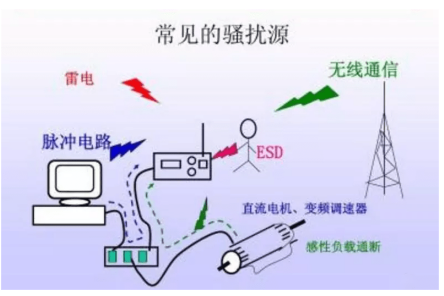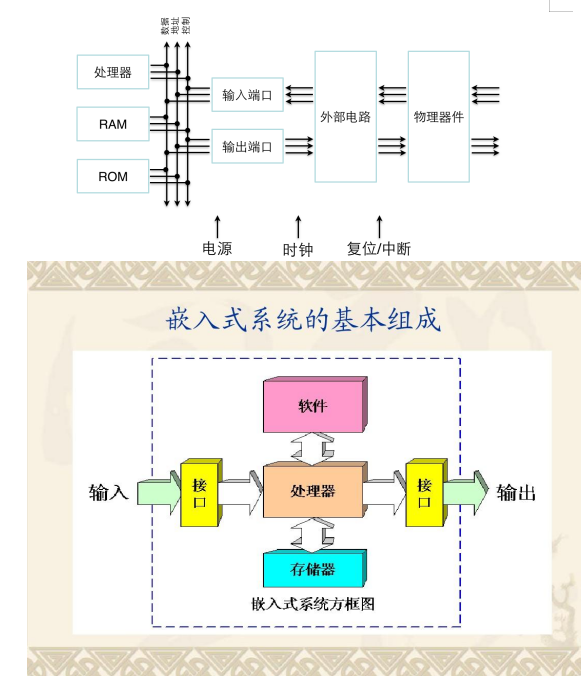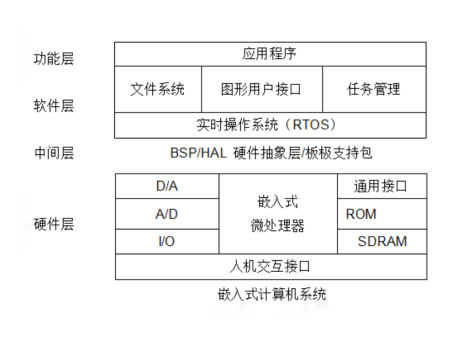0 Introduction
As the core hub and interaction interface of the entire system, the reliability of embedded control systems directly affects the overall operational efficiency of the system. Once a failure occurs, it not only prevents operators from performing their tasks normally but can also lead to a complete functional paralysis of the entire system. Therefore, the design of electromagnetic compatibility (EMC) for embedded control systems is particularly important, focusing on ensuring that various devices can work together without interference in the same electromagnetic environment.
EMC, as a multidisciplinary field, has increasingly broad applications, and its importance in embedded systems is becoming more pronounced. Modern electronic devices inevitably generate electromagnetic radiation during operation, which may interfere with surrounding devices; at the same time, the devices themselves face challenges from complex electromagnetic environments. The key issue in EMC research is to solve the compatibility problems of coexisting devices.
Embedded systems are application-oriented dedicated computer systems characterized by customizable hardware and software, configurable functions, and strict requirements in terms of reliability, cost, size, and power consumption. With the rapid development of technology, embedded systems have been widely used in critical fields such as consumer electronics, medical devices, industrial automation, smart instruments, and aerospace. In this context, EMC technology has become an indispensable consideration in the design of embedded systems.

1 Sources and Propagation of Electromagnetic Interference in Embedded Systems
Generally speaking, systems that are electromagnetically compatible must meet three basic conditions: first, the system itself should not become a source of interference affecting other devices; second, the system should have the ability to resist external electromagnetic interference; and finally, the internal modules of the system should not interfere with each other. With technological advancements, modern high-performance embedded systems present new EMC challenges: on one hand, the operating frequency of the system has exceeded 100 MHz, and the application of new processes has improved operational speed and expanded functional interfaces, but it has also introduced more complex high-frequency interference issues; on the other hand, the dense deployment of electronic devices has led to a deteriorating electromagnetic environment, making the conflict between electromagnetic interference and anti-interference more pronounced.
In embedded systems, electromagnetic interference primarily propagates through two pathways: conducted interference (transmitted through conductors) and radiated interference (propagated through electromagnetic fields). Typical sources of interference include natural phenomena (such as lightning), electromechanical devices (relays, DC motors), and lighting equipment (fluorescent lamps), among others. Additionally, AC power lines, interconnect cables, metal cables, and internal circuits of the system can all become sources or receivers of interference. The core task of EMC research in embedded systems is to eliminate or suppress these interferences through technical means, ensuring stable operation of the system in complex electromagnetic environments.

2 Characteristics of Embedded Control Systems and EMC Design Methods
2.1 Characteristics
Embedded control systems typically integrate various sensitive electronic components, including digital circuits, analog circuits, and various signal conversion circuits, which are generally highly sensitive to electromagnetic interference and electrostatic discharge.
The system interacts with external units through diversified input/output interfaces. Due to significant differences in signal characteristics across interfaces, improper circuit design can easily become a source or pathway for interference. It is noteworthy that, as a precise logical operation system, even the smallest interference (such as a single bit flip) can lead to abnormal system functionality. However, this characteristic based on program execution also provides possibilities for anti-interference design at the software level.
With technological advancements, modern embedded control systems are exhibiting trends of increasing frequency (continuously rising operating frequencies) and increasing density (continuously increasing integration). This evolution makes hardware structural design issues such as printed circuit board layout and transmission line impedance matching particularly critical, directly affecting the electromagnetic compatibility performance of the system.

2.2 Methods to Address Electromagnetic Compatibility in Embedded Systems
The research on electromagnetic compatibility in embedded systems mainly involves two directions: one is addressing the EMC issues of existing systems, and the other is developing new systems that comply with EMC standards. For existing systems, improving electromagnetic compatibility often faces many limitations, and rectification can be quite challenging. In severe cases, it may only be resolved through system redesign or complete replacement. Therefore, current research is more focused on how to ensure the EMC performance of newly developed systems from the design source.
In the field of developing new embedded systems, a rich technical accumulation has been formed, which can be summarized into two dimensions: hardware and software. Hardware solutions include:
1. Adhering to specific design principles and layout techniques
2. Using dedicated anti-interference components
3. Configuring auxiliary protection circuits
On the software side, the main approach is to enhance the system’s anti-interference capability through optimized programming techniques. This collaborative design method of hardware and software provides an effective way to develop embedded systems with high electromagnetic compatibility.
2.2.1 Principles and Techniques of Hardware Design
From the perspective of system architecture, EMC design mainly involves three key technologies: structural optimization design, electrical isolation technology, and grounding system design. These technologies together form the foundational framework for electromagnetic compatibility in embedded systems. At the component level, the focus is on the anti-interference design of the power supply system and the optimized layout of printed circuit boards (PCBs).
The main function of structural design and isolation technology is to achieve effective isolation between high-power devices and sensitive signal devices, avoiding mutual interference. Grounding system design, as a key aspect of electromagnetic compatibility, includes technical points such as optimal grounding point selection strategies, mixed circuit grounding scheme optimization, and grounding interference suppression technology application. The reasonable application of these grounding technologies has a decisive impact on the anti-interference performance of the entire system.
In power supply system design, stability is enhanced mainly through multi-stage voltage regulation circuit design, the application of isolation transformers, and the integration of composite filtering technologies.
PCB design focuses on optimizing component layout, routing path planning, and multilayer board stacking design. Among these, grounding systems and PCB design often encounter high frequencies and complex technical issues, leading to frequent problems in practical applications. Particularly in the PCB design field, there remains significant research value and room for improvement in aspects such as high-speed signal integrity and electromagnetic radiation control.
2.2.2 Common Anti-Interference Devices and Auxiliary Circuits
Anti-interference devices include decoupling capacitors, magnetic components, transient interference absorption devices, and self-resetting fuses. Auxiliary circuits mainly include clock monitoring circuits, watchdog circuits, voltage reset circuits, and back EMF suppression circuits. It is important to note that self-resetting fuses, clock monitoring, watchdogs, and voltage resets have significant functional limitations. These solutions essentially avoid the impact of electromagnetic interference by interrupting the system or forcing a reset. However, for critical systems that require continuous stable operation without interruption (such as industrial control, medical devices, etc.), such protective mechanisms lose their practical value. In such cases, more advanced real-time fault-tolerant design methods must be employed rather than simple reset protection strategies.
2.2.3 Software Techniques
The impact of electromagnetic interference on high-frequency clock signals can sometimes cause programs to “go haywire,” leading to system instability, errors, or even crashes. To mitigate this phenomenon, some techniques can be employed in software programming, commonly including instruction redundancy and software traps. Instruction redundancy techniques involve using as many single-byte instructions as possible, inserting appropriate NOP bytes after multi-byte instructions, and rewriting instructions that are critical to program flow and certain instructions that significantly affect system operational status. Software trap techniques mainly involve using guiding instructions to forcibly redirect captured “haywire” programs to a specific location for processing, bringing the program back on track. The adoption of software techniques can make the system relatively robust, capable of eliminating some interference effects. Although these software methods cannot completely eliminate electromagnetic interference, they can significantly improve the operational stability of the system in harsh electromagnetic environments, serving as an important complement to hardware protection measures. In practical engineering, it is recommended to adopt different levels of redundancy design combinations based on the criticality of the system.
3 Research Directions and Current Research Status of EMC in Embedded Systems
3.1 Research Directions of EMC in Embedded Systems
The application of the above methods plays a significant role in enhancing the electromagnetic compatibility performance of embedded systems. However, due to the inherent complexity of embedded systems and the variability of their environments, designers face numerous considerations and challenges, making it difficult to ensure comprehensive and thorough designs. Additionally, verifying designs poses a significant challenge. Currently, our technical means primarily involve testing samples for design verification, but testing equipment is expensive, and the testing process is challenging and time-consuming. These challenges in electromagnetic compatibility for embedded systems are also a major topic in the field of EMC research, namely, computer-aided analysis of electromagnetic compatibility. For any comprehensive electronic system, due to complexity and economic reasons, it is often difficult to address EMC issues through experimental methods, while software approaches can effectively resolve some problems. For embedded systems, it is essential to vigorously develop modeling and simulation methods and corresponding software to achieve computer-aided analysis in the design, prediction, and evaluation of electromagnetic compatibility, thereby effectively addressing some EMC issues.

3.2 Research Status Abroad
Historically, the development of embedded systems and EMC research has shown a typical “generational difference” characteristic:
1. The historical evolution of EMC research in the United States
– Foundational Period (1950s onwards): A stage of pioneering theoretical research
– Breakthrough Period (1968): Johnson and Thomas first proposed the concept of computer-aided analysis
– Development Period (1970s-80s): Rapid improvement of the theoretical system
– Maturity Period (1990s to present): Formation of a complete “theory-standard-database-toolchain” technical system
2. Technical Development Path
The United States has undergone a complete evolutionary process:
Basic Research → Theoretical Modeling → Data Accumulation → Standard Formulation → Tool Development → Engineering Application
Currently achieved:Establishment of a comprehensive database of electromagnetic characteristics of components,Development of specialized analysis software for various fields (such as ANSYS EM, CST, etc.),Formation of an industrialized technical service system
3. Latecomer Advantages of Embedded Systems
Thanks to prior accumulations, research on EMC in embedded systems has achieved “leapfrog development”:Directly inheriting the mature technical framework of comprehensive electronic systems,Quickly entering the stage of computer-aided analysis,Currently focusing on:High-precision modeling methods,Multi-physical field coupling simulation,Intelligent prediction technologies.
This “standing on the shoulders of giants” development model has enabled research on EMC in embedded systems to possess advanced technical means from the outset, and it is currently rapidly evolving towards digitization and intelligence.
3.3 Research Status in China
Research on EMC and the promotion of embedded systems in China began almost simultaneously in the 1990s, and this “dual-track parallel” development model necessitates that research must start from foundational theories, standard systems, and electromagnetic characteristics. Currently, research on EMC in embedded systems in China mainly focuses on two aspects: improvements in design and protection, and studies on electromagnetic characteristics. In terms of design and protection improvements, most research is based on embedded systems applied in their respective fields, making it quite targeted. Currently, there are many research results in areas such as satellites, aircraft, and missiles, while some research focuses on the design and development of embedded systems, summarizing valuable experiences and techniques. In terms of electromagnetic characteristics research, there are currently few results, with only a few groups studying the electromagnetic characteristics of certain embedded systems under specific environmental conditions, such as the effects of strong electrostatic discharge and nuclear electromagnetic pulses on microcontrollers, accumulating some valuable experimental data. It can be said that the depth of research remains at the stage of basic experiments and data accumulation, and a complete theoretical method and technical system have yet to be formed. This situation sharply contrasts with the rapid development of embedded systems in China, highlighting the urgent need to strengthen collaborative innovation between foundational research and engineering applications.
4 Conclusion
As the importance of electromagnetic compatibility in embedded systems becomes increasingly prominent, our current technical means still have significant limitations. It is essential to vigorously develop computer-aided analysis technology for electromagnetic compatibility in embedded systems, which first requires a relatively complete EMC database. Although current research in various areas, whether in design protection technologies or electromagnetic characteristics, can be seen as the foundation of an EMC database, the current approach of small-scale research by various teams makes it difficult to achieve leapfrog development. The electromagnetic compatibility of embedded systems needs to embark on an industrialization path, with multi-field collaboration to rapidly build a universal foundational database platform, develop general mathematical simulation models and software modules, etc. Only through this systematic and industrialized approach can we truly achieve computer-aided analysis in EMC design, meeting economic and reliability requirements, and addressing EMC issues in embedded systems across various industries from the design source. This requires the joint efforts of government departments, research institutions, and industry enterprises to build a healthy industrial development ecosystem.